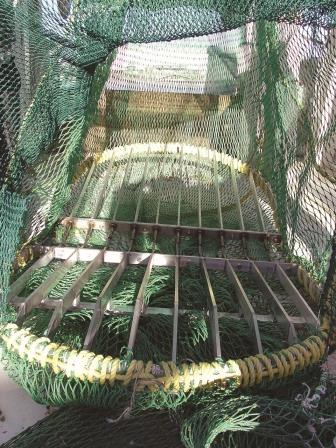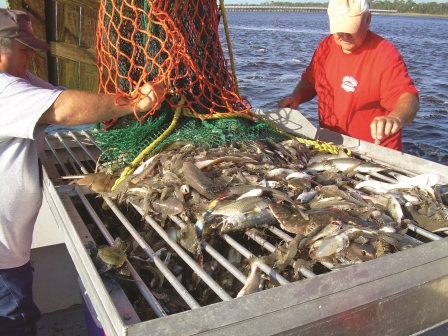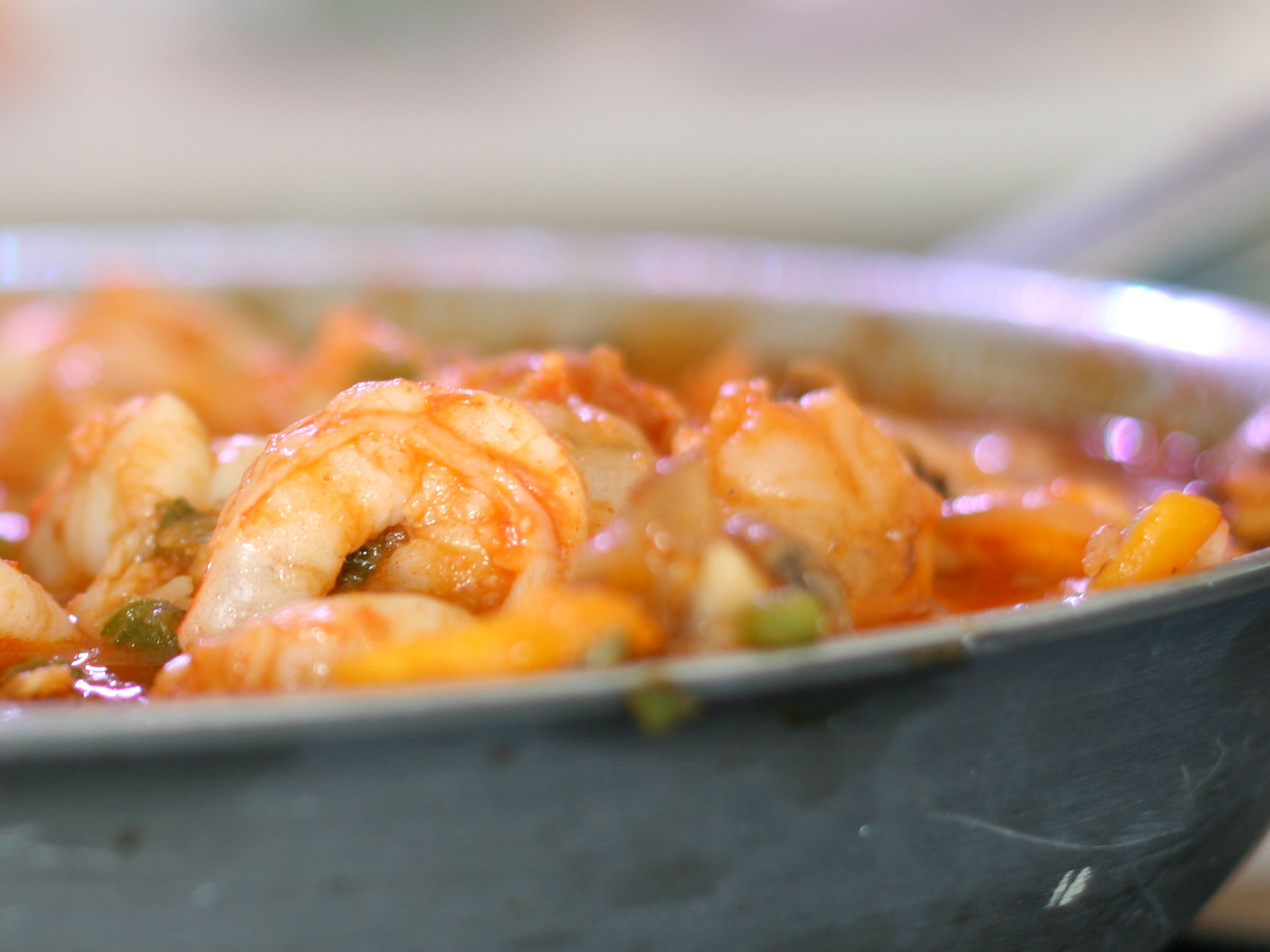AQUACULTURE: Science Working for the Economy
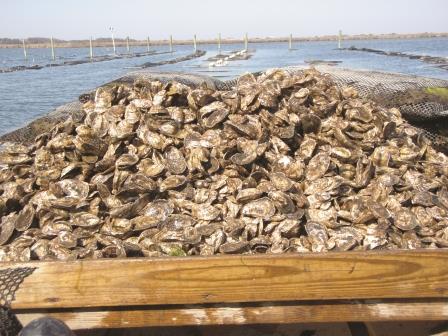
Jay Styron has an audacious mission: To provide high-quality half-shell oysters to the world.
That’s a pretty bold notion for someone who raises oysters in a mere 500 cages floating in estuarine waters off Cedar Island in Carteret County. “I like to think big,” he tells you with a sly grin.
Don’t be too quick to call him a dreamer. There are those who would call him a visionary — one who sees the role marine and freshwater aquaculture collectively must play to provide healthy and sustainable seafood for a global market.
Today, about half the fish consumed around the world is produced by aquaculture, explains Marc Turano, North Carolina Sea Grant mariculture and blue crab specialist.
“Based simply on projected population growth, consumer demand for seafood will continue to rise. Aquaculture must grow to meet future needs, especially in the face of declining wild-caught fish populations,” Turano points out.
According to statistics from the National Oceanic and Atmospheric Administration, close to 90 percent of all seafood is imported in the United States, with about half of that coming from aquaculture products. American fish farming supplies only about 5 percent of the seafood Americans consume.
In North Carolina, aquaculture accounts for only a small fraction of the annual total agriculture industry revenue, according to the N.C. Department of Agriculture and Consumer Services, or NCDA&CS.
Still, as Turano sees it, the potential for North Carolina’s aquaculture is strong because current and prospective fish growers don’t have to go it alone. In fact, anyone looking for a working definition of science and technology transfer need look no further than the state’s aquaculture industry and its network of partnerships.
The 1989 N.C. Aquaculture Development Act provides a framework for partnerships that connect industry practitioners with university researchers, field faculty, and N.C. Cooperative Extension and Sea Grant specialists, as well as the U.S. Department of Agriculture, or USDA, and NCDA&CS marketing experts.
“These partnerships provide a great exchange of information,” Turano points out. “The open dialogue enables us to collaboratively identify issues and look for solutions. It’s about trying to make science work for the industry.”
PARTNERSHIPS PAY OFF
Styron knows firsthand how research partnerships help fine-tune the efficiency of growing oysters for the half-shell trade. His business, Carolina Mariculture Co., occupies two acres of a family-held, 10-acre traditional oyster bottom lease.
A Sea Grant-funded project is helping Styron zero in on the best strain of oyster for local waters.
He is among growers testing North Carolina oyster seed that researchers hope will grow better than the more common Virginia-sourced lines. Ami Wilbur, director of the University of North Carolina Wilmington’s shellfish hatchery, leads this work, funded by the N.C. Blue Crab and Shellfish Research Program that is administered by Sea Grant.

With Troy Alphin of UNCW, Styron also has field-tested different floating-cage systems for off-bottom culture. Styron continues to tweak the “winner” of that trial run — part of learning to build a better mousetrap, as he describes it. This work was supported by the N.C. Fishery Resource Grant Program, also administered through Sea Grant.
“The floating cages are at the top of the water column with plenty of swift-moving tidal waters flowing through the cages. As a result, the oysters are mud-free and pretty much ready for market when we harvest them,” he explains.
Styron learned to stagger the planting of his hatchery-raised spat, enabling him to manage each class closely from start to harvest, every 14 to 16 months. “Rotating our crop means our oysters are available nearly all year round, not just in months with an R,” he explains.
Each harvest yields about 30,000 individual oysters, which he and his wife Jennifer hand pack in boxes of 100 for customers who have paid in advance.
Styron uses his business as a demonstration project to encourage bottom-lease holders to consider new ways to grow their businesses, and to help local oystermen explore options beyond the wild catch.
Now, Styron, Turano, Alphin, UNCW biologist Martin Posey and others are collaborating on an aquaculture development grant from NOAA, to use Global Information Systems to identify locations suitable for shellfish farming; evaluate the feasibility of floating cages, bottom cages and/or rack and bag methods; and analyze local economic impacts.
The results could mean a substantial boost for the cultured oyster industry in North Carolina. Expanded oyster farming would help take the pressure off wild stock — and might even move Styron a step closer to providing oysters on the half shell for the world.
STRENGTH IN NUMBERS
Freshwater prawns are coming into the aquaculture market. They are not to be confused with marine shrimp. According to Turano, the freshwater prawn is typically larger than marine shrimp, and has a larger head and claws. The prawns are grown in ponds.
When you’re one of the newest and smallest kids on the block, sometimes it pays to get tough. That’s what happened when a determined group of freshwater-prawn growers from eastern North Carolina banded together to become The American Prawn Cooperative, or APC, in 2008.
Since then, they have experienced measurable success, says Charlene Jacobs, APC president who operates Harvest of the Great Spirit Prawn Farm in Clinton with her husband Gene and their son Chad.
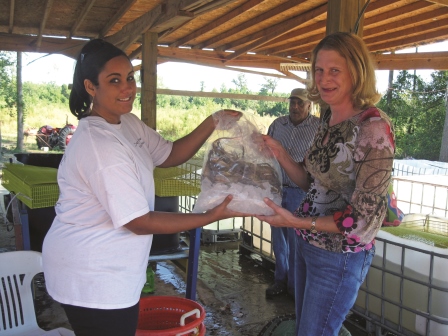
“We understood that there is strength in numbers and that establishing a cooperative would give us credibility with funding organizations. That, and a solid business plan, mission statement, bylaws and marketing agreement,” Jacobs adds.
In the year or so leading up to forming the co-op, growers turned to Mike Frinsko, an area Cooperative Extension aquaculture specialist based in Jones County, to help identify resources and places to learn more about freshwater-prawn pond culture, markets and marketing, and funding opportunities.
“It was my job to harness all that energy,” Frinsko insists. “They have the passion and are proving to be highly entrepreneurial.”
Jacobs points out that the co-op’s seven producer members follow research-based best management practices to produce environmentally sustainable, pond-raised crops. They give their prawn all-natural feed with no animal or fish by-products, and use no chemicals, antibiotics or hormones. Their ponds are designated “no-fly zones” to prevent crop-duster planes from polluting their waters.
Their efforts have earned them sizeable grants, including an Innovation Grant from the N.C. Rural Development Center, a Golden LEAF Foundation grant, a Rural Advancement Foundation Institution-USA grant, funding from the Tobacco Trust Fund Commission, and a USDA Value Added grant.
The funding boom enabled the APC to construct a processing center in Greene County, where most APC growers are located; purchase live-haul transportation tanks and trailer; buy a quick-freeze unit for the processing facility; and contract a broker to assist APC to establish markets for its freshwater prawns.
APC members share the facilities and equipment — as well as the work. And there is plenty of sweat equity involved in harvesting and processing the yearly crop, attests Natalie Relyea, who operates Crazy Claws Prawn Farm with her husband John in Walstonburg.
“The work is made light by many hands and strong backs of members who assist each other during labor-intense early fall harvest schedules. Harvests must be completed before pond temperatures drop below 70 degrees or risk losing an entire year’s crop,” she adds.
But the rewards are sweet, especially because the fruits of their cooperative labor are reaping support from Chicago, Atlanta and California niche markets. This year, with a 10,000-pound order from a California firm that distributes to high-end restaurants, APC members are savoring the taste of success.
FROM FEATHERS TO FINS
These flounder and hybrid striped bass never had it so good. They enjoy the good life swimming about in temperature-controlled, recirculating aquaculture systems, feasting on diets especially formulated for every stage of their lives, and basking in the constant attention of Larry Lanier and Robin Sanderson.
Lanier and Sanderson operate Little River Trails Aquaculture, off a winding country road in Bunnlevel, an agricultural community in Harnett County. The business partners are converting the former poultry farm into a state of-the-art aquaculture facility. The conversion work is being funded, in part, with support from a USDA Rural Development grant and a USDA National Institute for Food and Agriculture grant.
When complete, four barns will house a nursery and three grow-out houses for flounder and hybrid striped bass. The energy-efficient buildings are outfitted with geothermal heating and cooling systems to maintain a year-round air and water temperature of 78 to 80 degrees — ideal for the warm-water species to thrive.
Surprisingly, flounder and hybrid striped bass are marine species but they do fine in fresh groundwater as long as the water contains adequate minerals, Sanderson notes.

Sanderson and Lanier are working with Sea Grant’s Turano to fine-tune a feeding regimen for the hybrid striped bass. The goal is to identify the best diet for fish grown in tank-water systems. In addition, the pair adopted best management practices drawn from Sea Grant’s extensive hybrid striped bass research and demonstrations led by Craig Sullivan and Ronald Hodson at North Carolina State University over the years.
The farm also has been a demonstration site for flounder aquaculture techniques developed through Sea Grant research, including projects by Wade Watanabe of UNCW, and Harry Daniels and Russell Borski from NC State.
Little River Trails also joined the Fish Connection Co-op, a Washington, N.C., seafood distributor that handles marketing and helps develop group-buying power.
Sanderson says as newcomers to the aquaculture industry, they are still in a learning curve. So far, they have had better luck with hybrid striped bass than with flounder. And they are sticking to selling on-ice fish because it fits well with their business plan.
Still, they are pleased with the per-pound price both species are attracting from markets in Maine, Canada and New York, thanks to efforts by The Fish Connection.
DIVERSITY HALLMARK OF INDUSTRY
North Carolina may be a small contributor to the global or national aquaculture industry, but what it lacks in volume, it makes up for in diversity. The product list includes oysters, clams, blue crabs, flounder, shrimp, black sea bass, hybrid striped bass, prawn, tilapia, catfish and rainbow trout.
By far, catfish and rainbow trout lead the state industry in production and longevity.
Those attending the 2013 North Carolina Aquaculture Development Conference, at the Hilton in New Bern, will get a glimpse into many species during the three-day event, Feb. 7 to 9, says Turano, conference co-chair.
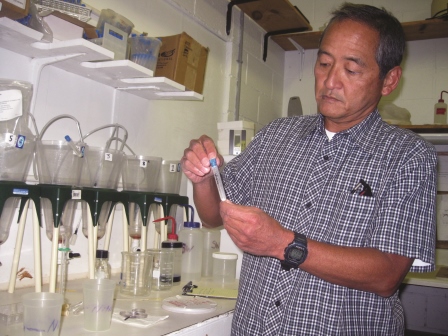
The conference is expected to draw about 250 attendees from across the state and country. It is open to anyone with an interest in fish or shellfish farming, as well as those who sell services or products to the aquaculture industry.
On Friday morning, conference attendees will have a chance to meet Sally Eason, the face of Sunburst Trout Farms. She’ll talk about niche marketing of aquaculture products.
Sunburst has been in operation since 1948 when her father, Dick Jennings, returned from World War II to start the business. Eason and her husband, Steve, took over the operation in 1980 and transformed the company, which now is recognized for environmentally sustainable practices.
A member of the salmonid family, trout require pure, cold and fast-moving water — and lots of it — for optimal growth. At Sunburst Farms, water for cultivation in flow-through “raceways” comes pouring in at 12,000 gallons per minute from the pure mountain water of the Shining Rock Wilderness area of Pisgah National Forest.
The water treadmill helps trout maintain healthy metabolic activity and simulates upstream swimming to enhance the trout’s natural development and growth. The end result is healthy, plump and firm filets, Steve Eason explains.
Like others in the aquaculture industry, Sunburst has encountered a bump or two over the years, he says. And like others, the Easons know they can turn to experts for guidance. “Jeff Hinshaw is in our backyard,” he adds, citing operational improvements. “He has helped us tweak our process.”
Hinshaw, cold water aquaculture specialist for N.C. Cooperative Extension, is stationed at the Mountain Horticultural Crops Research and Extension Center in Fletcher.
“We help to improve efficiency and production issues,” he says. “At Sunburst, we made some recommendations last summer when drought and high temperatures warmed usually cool mountain streams. They were able to pull water from the lake bottom, and use aeration and ozone to help.”
The most serious situation cropped up several years ago when the trout-growing industry was being affected by certain pathogens that seemed resistant to normal methods of vaccination. “We tested other methods that proved effective and it was adopted industry wide. As a result, we took the pathogen out of the picture,” he adds.
The trout industry is well established in the mountain region, and very open to information from university researchers and extension specialists that can help them make decisions based on the best science.
For example, Sunburst collaborated with Barry Nash, Sea Grant seafood technology and marketing specialist, on their Hazard Analysis and Critical Control Points plan — also known as HACCP — that is a records management tool for food safety.
“Expansion of trout aquaculture, like other segments of the aquaculture industry, could help address a number of overarching issues: decrease the U.S. trade imbalance, increase assurances for safe food in the U.S. market, and provide safe nutritional products that are benign to the environment,” Hinshaw concludes.
Aquaculture Development Conference Set for February
Registration is open for the 2013 North Carolina Aquaculture Development Conference, Feb. 7 to 9, at the Hilton in New Bern. North Carolina Sea Grant is among the organizers.

The conference brings together current growers, researchers, agencies and vendors, as well as prospective aquaculturists and investors. It offers a comprehensive view of the aquaculture industry across the state.
North Carolina’s aquaculture industry is more diverse than most other places, says Marc Turano, Sea Grant mariculture and blue crab specialist and conference co-chair.
North Carolina farmers grow trout, catfish, hybrid striped bass, black sea bass, flounder, shrimp, crawfish, ornamental fish, blue crabs, clams and oysters.
The conference begins with self-guided tours of nearby aquaculture operations on Thursday, Feb. 7. Tour sites include Carolina Classics Catfish, Inc. in Ayden; Castle Hayne Fisheries in Aurora; and North Carolina State University’s Pamlico Aquaculture Research Station in Aurora.
Presentations on Friday and Saturday cover topics including research and technology, marketing and economics, and emerging opportunities to raise marine species. In addition, vendors will display the latest equipment throughout the conference.
Keynote speaker, Chuck Anderson, director of new business and retail for Boston-based Sousa Seafood, will address marketing aquaculture as a sustainable growth industry.
The busy Friday agenda culminates with the popular Aquafoods Festival. On the menu are common aquaculture species, including clams and oysters, trout, and striped bass.
Visit: www.ncaquaculture.org for additional information and registration. On-site registration may be available at the conference. For agenda questions, contact Cathy Smith at: cathy_smith@ncsu.edu or 919/515-6780. For trade show details, contact Pete Anderson at: pete.anderson@ncagr.gov or 252/633-1477. — P.S
This article was published in the Holiday 2012 issue of Coastwatch.
For contact information and reprint requests, visit ncseagrant.ncsu.edu/coastwatch/contact/.
